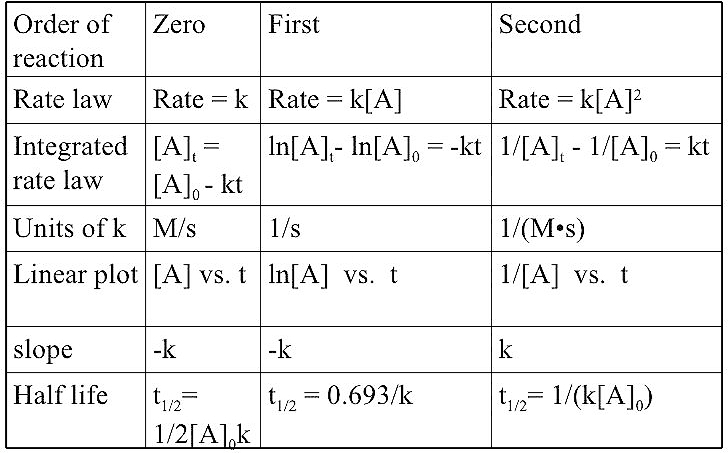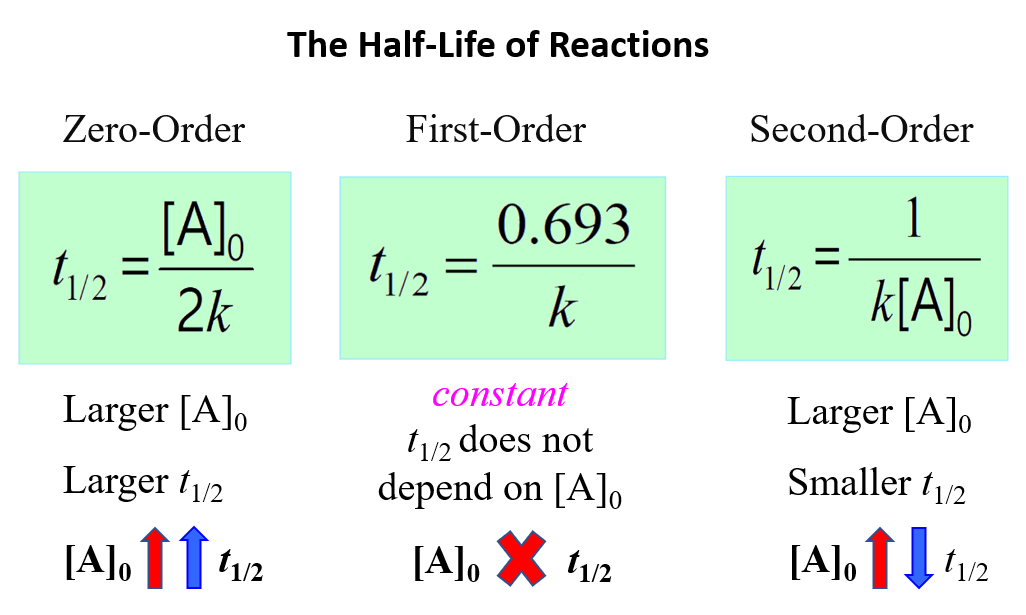
At a certain temperature, the rate constant of a first - order reaction is 1.40 min ^-1 . Find its half - life.

SOLVED: The following count rate data from a radioactive isotope were measured (min) 3.0 6.0 9.0 12.0 18.0 cnts /min 9302 7932 6901 5853 4397 t (min) cnts /min 24.0 3200 30.0
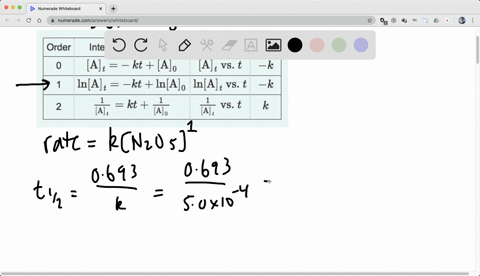
Chapter 15, Principles of Reactivity: Chemical Kinetics Video Solutions, Chemistry and Chemical Reactivity | Numerade
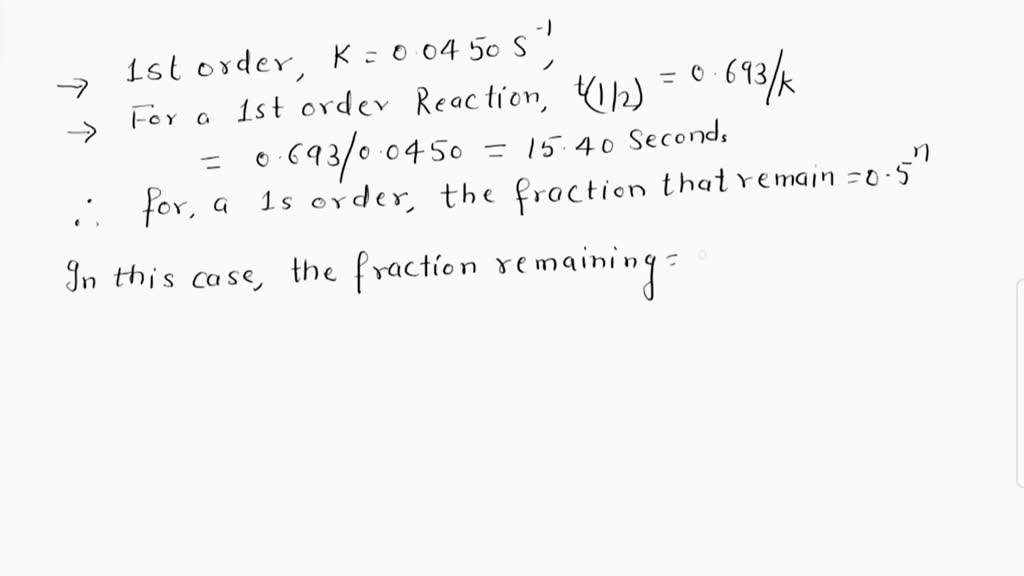
SOLVED: If a reaction is first order with a rate constant of 0.0450 s⁻¹, how much time is required for 65% of the initial quantity of reactant to be consumed?
A first order reaction completes 50% at the end of 50 minutes. What is the value of rate constant in sec^-1? How many times will the reaction be complete at 87.5%? - Quora

Chapter 9, Chemical Kinetics Video Solutions, Numerical problems in Physical Chemistry for IIT-JEE | Numerade

Half life of a first order reaction is 2.1xx10^(12)s. Calculate the rate constant of the reactio... - YouTube

The reaction `A(g)toB(g)+2C(g)` is a first order reaction with rate constant `2.772xx10^(-3)sec^(-1) - YouTube

Calculate the half life of a first order reaction from their rate constants given below:(a) 200 s^-1 ; (b) 2 min^-1 ; (c) 4 year^-1 .
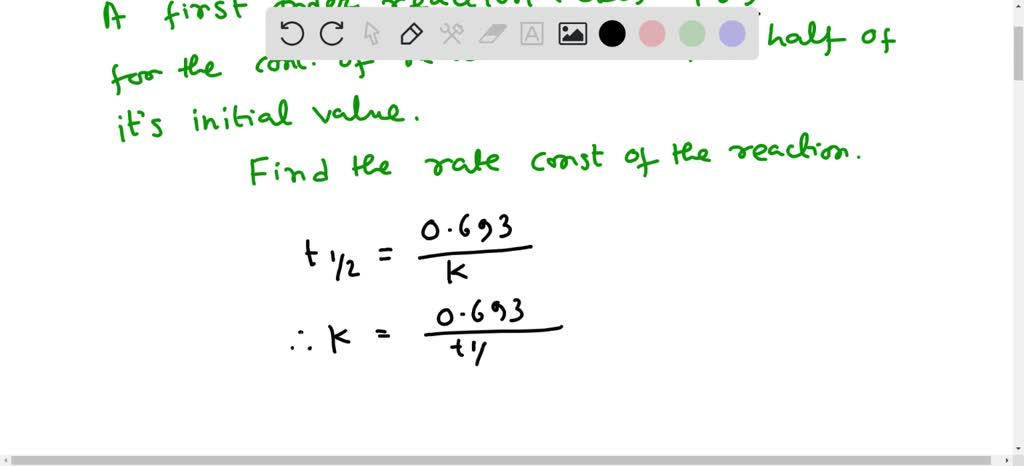
SOLVED: What is the rate constant of a first-order reaction that takes 456 seconds for the reactant concentration to drop to half of its initial value?
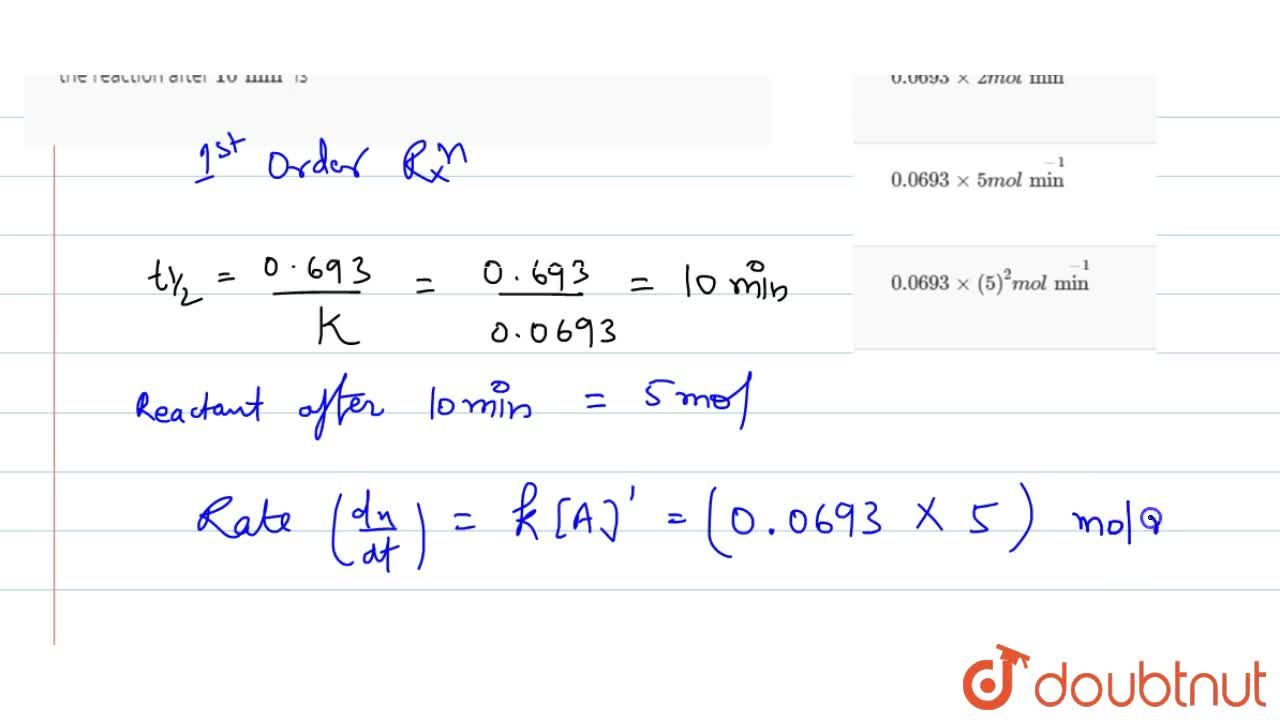
The rate constant of a reaction is 0.0693 min^(-1). Starting with 10 mol, the rate of the reaction after 10 min is

The reaction is given below, the rate constant for disappearance of A is 7.48 × 10^-3sec^-1 . The time required for the total pressure in a system containing A at an initial

Calculate the half life of a first order reaction from their rate constants given below:(a) 200 s^-1 ; (b) 2 min^-1 ; (c) 4 year^-1 .

SOLVED: The potassium isotope K-40 undergoes beta decay with a half-life of 1.83*10^9 years. Find the number of beta decays that occur per second in 1.0g of pure K-40.

The energy of activation and specific rate constant for a first order reaction at 25^∘ C are 100kJ/mole and 3.46 × 10^-5sec^-1 respectively. Determine the temperature at which half - life of

For a reaction A ⟶ B + C . it was found that at the end of 10 minutes from the start the total optical rotation of the system was 50^o and

The rate constant of a reaction is 0.69 xx 10^(-1) and the initial concentration is 0.2 "mol l"^(-1). The half-life period is

For a reaction A ⟶ B + C . it was found that at the end of 10 minutes from the start the total optical rotation of the system was 50^o and




